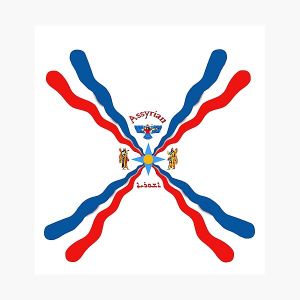Difference between revisions of "Language/Assyrian-neo-aramaic/Grammar/How-to-Use-Have"
m (Quick edit) |
m (Quick edit) |
||
| Line 90: | Line 90: | ||
|description=In this lesson, we will learn how to use the verb "have" in Assyrian Neo-Aramaic. We will look at the different forms of the verb and how it is used in different contexts. We will also look at some examples of sentences using the verb "have". | |description=In this lesson, we will learn how to use the verb "have" in Assyrian Neo-Aramaic. We will look at the different forms of the verb and how it is used in different contexts. We will also look at some examples of sentences using the verb "have". | ||
}} | }} | ||
==Related Lessons== | |||
* [[Language/Assyrian-neo-aramaic/Grammar/Questions|Questions]] | |||
* [[Language/Assyrian-neo-aramaic/Grammar/Conditional-Mood|Conditional Mood]] | |||
* [[Language/Assyrian-neo-aramaic/Grammar/Plurals|Plurals]] | |||
* [[Language/Assyrian-neo-aramaic/Grammar/How-to-Use-Be|How to Use Be]] | |||
* [[Language/Assyrian-neo-aramaic/Grammar/Pronouns|Pronouns]] | |||
* [[Language/Assyrian-neo-aramaic/Grammar/Adjectives|Adjectives]] | |||
{{Assyrian-neo-aramaic-Page-Bottom}} | {{Assyrian-neo-aramaic-Page-Bottom}} | ||
Revision as of 00:32, 2 March 2023
Hi Assyrian Neo-Aramaic learners! 😊
In this lesson, we will learn how to use the verb "have" in Assyrian Neo-Aramaic. We will look at the different forms of the verb and how it is used in different contexts. We will also look at some examples of sentences using the verb "have".
Introduction
The verb "have" is an important verb in Assyrian Neo-Aramaic. It is used to express possession, ownership, or a relationship between two people or things. It can also be used to express an action that has been completed. In this lesson, we will look at the different forms of the verb "have" and how it is used in different contexts.
Forms of the Verb "Have"
The verb "have" has three forms in Assyrian Neo-Aramaic:
- mān (present tense)
- mānā (past tense)
- mānē (future tense)
Present Tense
The present tense of the verb "have" is mān. It is used to express possession, ownership, or a relationship between two people or things. It can also be used to express an action that has been completed.
Examples:
| Assyrian Neo-Aramaic | Pronunciation | English Translation |
|---|---|---|
| mān bābā | /maːn baːbaː/ | I have a father |
| mān kōl | /maːn kol/ | I have a voice |
| mān qāl | /maːn qaːl/ | I have said |
Past Tense
The past tense of the verb "have" is mānā. It is used to express an action that has already been completed.
Examples:
| Assyrian Neo-Aramaic | Pronunciation | English Translation |
|---|---|---|
| mānā bābā | /maːnaː baːbaː/ | I had a father |
| mānā kōl | /maːnaː kol/ | I had a voice |
| mānā qāl | /maːnaː qaːl/ | I had said |
Future Tense
The future tense of the verb "have" is mānē. It is used to express an action that will be completed in the future.
Examples:
| Assyrian Neo-Aramaic | Pronunciation | English Translation |
|---|---|---|
| mānē bābā | /maːneː baːbaː/ | I will have a father |
| mānē kōl | /maːneː kol/ | I will have a voice |
| mānē qāl | /maːneː qaːl/ | I will have said |
Examples
Here are some examples of sentences using the verb "have" in Assyrian Neo-Aramaic:
- Person 1: mān bābā (/maːn baːbaː/) (I have a father)
- Person 2: mānā bābā (/maːnaː baːbaː/) (I had a father)
- Person 1: mānē bābā (/maːneː baːbaː/) (I will have a father)
- Person 1: mān kōl (/maːn kol/) (I have a voice)
- Person 2: mānā kōl (/maːnaː kol/) (I had a voice)
- Person 1: mānē kōl (/maːneː kol/) (I will have a voice)
- Person 1: mān qāl (/maːn qaːl/) (I have said)
- Person 2: mānā qāl (/maːnaː qaːl/) (I had said)
- Person 1: mānē qāl (/maːneː qaːl/) (I will have said)
To improve your Assyrian Neo-Aramaic Grammar, you can also use the Polyglot Club website. Find native speakers and ask them any questions!
Conclusion
In this lesson, we have learned how to use the verb "have" in Assyrian Neo-Aramaic. We have looked at the different forms of the verb and how it is used in different contexts. We have also seen some examples of sentences using the verb "have".
➡ If you have any questions, please ask them in the comments section below.
➡ Feel free to edit this wiki page if you think it can be improved. 😎
